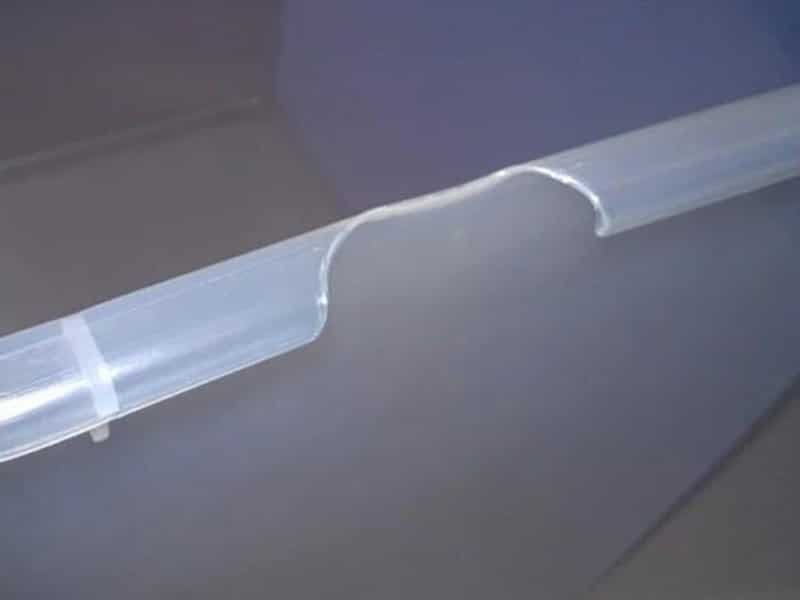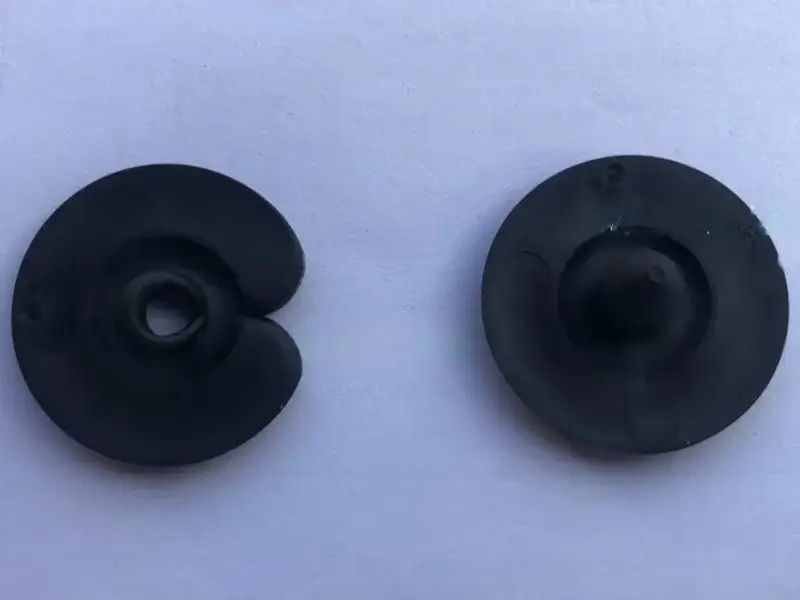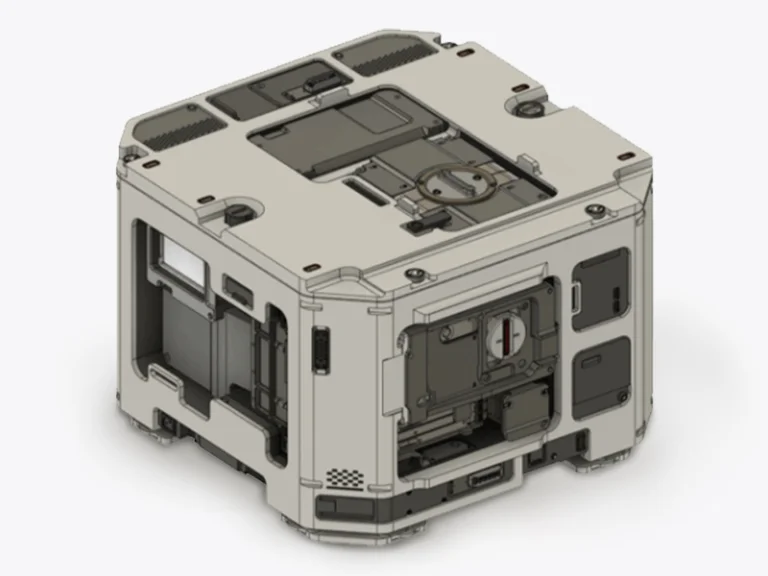Injection molding short shots are a common issue in plastic manufacturing, where the mold cavity fails to fill completely with the injected material, leading to defects in the final product. This article delves into the causes, impacts, and solutions for short shot defects, offering insights into how manufacturers can optimize their processes to enhance product quality and reduce production inefficiencies. From optimizing injection pressure to improving mold design and ensuring consistent thermal management, the strategies outlined here will help address the key factors contributing to injection molding short shots.

What Is Injection Molding Short Shots?
A short shot in injection molding occurs when molten plastic fails to completely fill the mold cavity, leaving voids, incomplete features, or thin-walled sections in the final part. This defect, also referred to as short shot injection molding or injection moulding short shot, is one of the most common issues in injection molding, compromises structural integrity and aesthetics, leading to scrapped parts and production delays. Common in complex geometries or thin-walled designs, short shot plastic defects arise from imbalances in material flow, cooling dynamics, or process parameters. For example, if a smartphone case mold has narrow ribs or intricate textures, insufficient material flow can leave these areas unfilled, resulting in a short shot molding defect.
Common Causes of Short Shots
Short shots in injection molding are a prevalent issue that can arise from several key factors.
Insufficient Injection Pressure and Speed
A primary cause of short shot injection molding defects is inadequate injection pressure or slow injection speed. If the molten plastic fails to reach all areas of the mold cavity before solidifying, it results in an injection moulding short shot.
- Insufficient Pressure: If the injection pressure is too low, the molten plastic may not fill the mold cavity completely, leading to short shot molding defects. Increasing the pressure can help ensure that the material reaches all areas of the mold.
- Incorrect Speed: A speed that is too fast can trap air, while a speed that is too slow may allow the material to solidify prematurely, both resulting in short shot plastic defects.
Material Viscosity and Flowability Issues
The viscosity of the molten plastic significantly impacts its ability to flow through the mold cavity. Materials with poor flowability struggle to reach thin-walled sections or complex geometries, causing a short shot defect in injection molding.
- High Viscosity: Materials with high viscosity, such as polycarbonate, require higher injection pressures to flow properly. If the pressure is insufficient, these materials may not fill the mold completely, causing short shot defects.
- Flowability: The flowability of the material affects how easily it fills the mold. Materials with poor flowability are more prone to short shot plastic issues. Using flow enhancers or selecting materials with better flow properties can mitigate these problems.
Mold Design Flaws, Including Gate Placement and Venting Problems
- Gate Placement: The location and size of the gates significantly impact material flow. Gates that are too small or poorly positioned can restrict flow, leading to short mold defects. Optimizing gate placement using simulation tools can help prevent these issues.
- Venting Issues: Trapped air can block material flow, especially in deep ribs or thick sections. Proper venting is essential to prevent air entrapment and ensure complete filling. Laser-engraved vents can be effective in resolving short shot molding defects.
Uneven Mold Temperature and Cooling Rate Variations
- Mold Temperature: An uneven mold temperature can cause premature solidification in some areas, preventing complete filling and leading to short shot defects in injection molding. Maintaining a uniform mold temperature is crucial for consistent material flow.
- Cooling Rate Variations: Different cooling rates across the mold can also affect material flow. Faster cooling in certain areas can solidify the material prematurely, causing short shot plastic issues.
Machine-Related Factors Affecting Shot Consistency
- Machine Calibration: Poor machine calibration can lead to inconsistent shot sizes and pressures, contributing to short shot molding defects. Regular maintenance and calibration are essential for maintaining consistent production quality.
- Screw and Barrel Wear: Wear on the screw and barrel can reduce plastication efficiency, affecting melt homogeneity and pressure consistency. This can lead to short shot defects due to inadequate material preparation.

How to Prevent and Fix Short Shot Issues in Injection Molding
Optimizing Injection Pressure and Speed Settings
Thin-walled parts (<1 mm) require speeds >100 mm/s to prevent short shots.
For thick-walled components, adopt a slow-fast-slow curve (e.g., 30 → 80 → 30 mm/s) to balance flow and cooling.
Key Adjustments
| Parameter | Optimization Strategy | Impact |
|---|---|---|
| Injection Speed | Use multi-stage injection profiling (slow-fast-slow) to balance flow and air escape. | Prevents premature solidification in thin sections while avoiding air traps. |
| Injection Pressure | Increase pressure by 10–15% for high-viscosity materials (e.g., polycarbonate). | Enhances flowability to fill intricate geometries. |
| Holding Pressure | Maintain 80–90% of injection pressure during packing to compensate for shrinkage. | Reduces short shot plastic defects in thick-walled areas. |
Material Selection and Melt Temperature Adjustments
Material Solutions
- Flow Enhancers: Add 0.1–0.5% silicone-based additives to polypropylene to reduce viscosity without raising temperature.
- Drying Protocols: Pre-dry hygroscopic resins (e.g., nylon) at 80°C for 4 hours to eliminate moisture-induced gas traps.
Melt Temperature Optimization
- Increase barrel temperatures by 10–20°C for high-viscosity polymers like ABS.
- Alternative Approach: Boost injection speed by 20–30% to lower shear-induced viscosity without risking thermal degradation.
Case Study:
A medical syringe manufacturer reduced short shot defects by 40% by switching from a general-purpose polycarbonate to a low-viscosity grade (Lexan 943A) and increasing melt temperature from 260°C to 280°C.
Mold Design Improvements for Flow and Venting
Poor mold design accounts for 30–50% of short shot issues.
Gate Optimization
- Use fan gates (width: 4–8 mm) for wide parts to distribute flow evenly1.
- For multi-cavity molds, implement hot runner systems to maintain consistent melt temperature.
Venting Solutions
- Add laser-engraved vents (depth: 0.015–0.03 mm) at end-of-fill zones to release trapped air.
- Position vents at ejector pin sites and parting lines to prevent short mold defects.
Vent Design Guidelines:
| Parameter | Specification |
|---|---|
| Vent depth | 0.02–0.04 mm |
| Vent width | 5–10 mm |
| Location | Last-to-fill areas |
Wall Thickness Redesign
- Ensure uniform thickness (1.5–3 mm) to avoid flow stagnation.
- Taper transitions between thick and thin sections at 30° angles to maintain flow momentum.
Thermal Management: Mold Temperature and Cooling
Uneven cooling rates exacerbate short shot plastic defects by creating premature solidification barriers.
Mold Temperature Control:
- Increase mold temperature by 6°C increments (max +30°C) to improve flow.
- Use conformal cooling channels to eliminate hotspots in complex geometries.
Cooling System Design:
- Maintain a cooling rate gradient <5°C across the mold surface.
- For ABS parts, set mold temperature at 50–80°C to balance flow and cycle time.
Case Study:
An automotive lighting manufacturer resolved short shots in mounting brackets by raising mold temperature from 40°C to 60°C and adding conformal cooling channels, reducing rejections from 30% to 2%.
Machine Maintenance and Process Monitoring
Consistent machine performance is vital to prevent short shot defects in injection molding.
Maintenance Strategies
- Screw and Barrel Inspection: Replace worn screws (wear >0.5 mm) to ensure proper plastication
- Clamping Force Calibration: Verify clamping force matches mold requirements (e.g., 3–5 tons/inch² for polypropylene).
Process Monitoring Tools
- Mold Flow Simulation: Software like Autodesk Moldflow predicts fill patterns and identifies short shot risk zones.
- Real-Time Sensors: Install cavity pressure sensors to detect incomplete fills and auto-adjust injection parameters.

Conclusion
Short shots in injection molding are a common issue that can significantly impact product quality. Understanding the causes, such as insufficient pressure, incorrect temperature settings, and poor mold design, is crucial for preventing and fixing these defects. By optimizing process conditions and mold design, manufacturers can reduce short shot defects and improve overall production efficiency. Implementing these strategies can help minimize downtime and enhance product quality, ultimately leading to cost savings and improved customer satisfaction.



